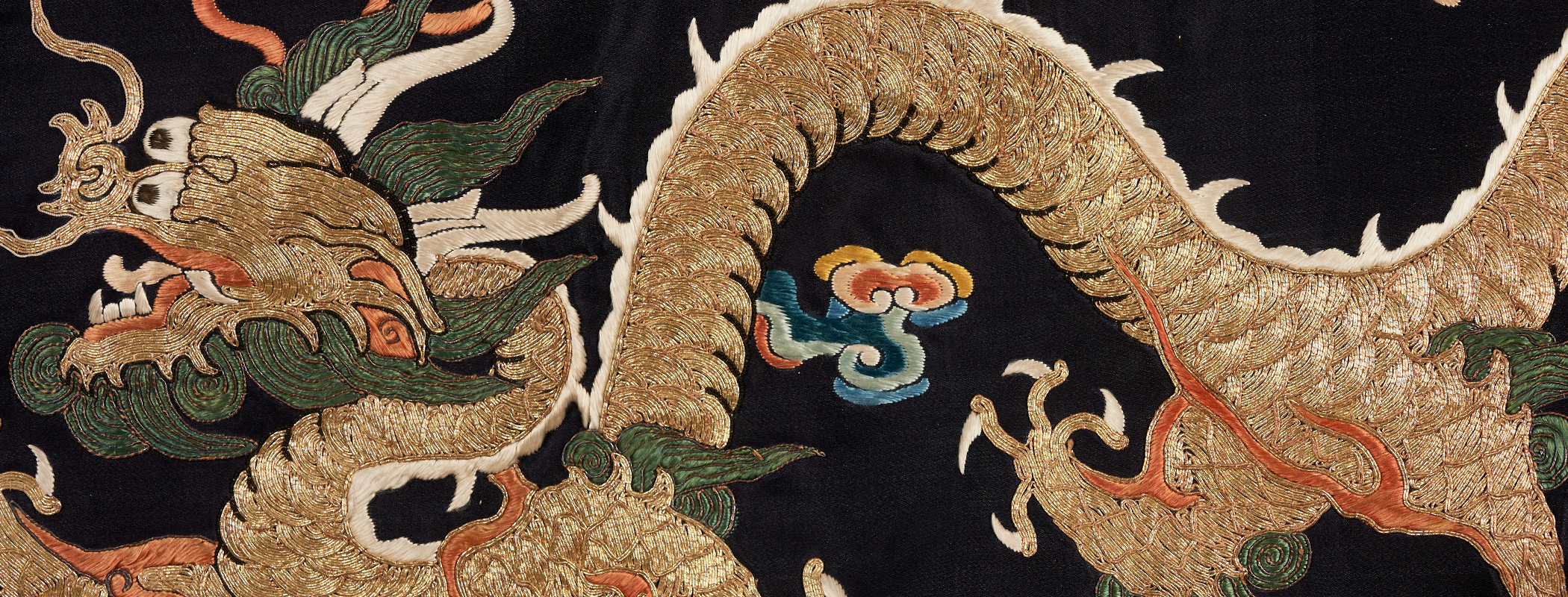
Jordan Schnitzer Museum of Art, Eugene, Oregon, Daoist Priest's Robe (Jiangyi) with Four-Clawed Dragon Rondel Design, Qing dynasty (circa 1850-1900), MWCH45:1.
Welcome
The Artful Fabric of Collecting site introduces viewers to Chinese textiles from the collection of Gertrude Bass Warner (1863-1951), an American who developed the conviction that improved relations between nations can only evolve from the mutual understanding and appreciation of educated minds.
Warner's life led her to Asia, where she lived for ten years, mostly spent in Shanghai. During her later travels she observed the destruction and devastation of World War I. These experiences guided her as she built an art collection with works from China, Korea, and Japan, as well as a collection of books from and reference literature about East Asia.
Today these collections are housed in the University of Oregon’s art museum, which opened in 1933 (and was renamed the Jordan Schnitzer Museum of Art, or JSMA, in recognition of the donor who helped complete the museum’s expansion in 2005) and Special Collections and University Archives in the University of Oregon Libraries.
Given to the university as a memorial to her late husband, the Murray Warner Collection consisted of more than 3,700 works of art from Asia as well as works by American and British artists who were influenced by Asian cultures.
Textiles feature prominently in Mrs. Warner's collection. She recognized that the distinction made by 19th-century European academics between works of fine art and applied arts and crafts did not adequately value the skills required to produce the luxurious silk fabrics that were favored in Asia and across the globe, the aesthetic, material, and social value they represented to their owners, or the contribution these textiles made to the economies of Asia.
Mrs. Warner's Chinese textiles are a unique treasure within the JSMA. They range from imperial robes, religious vestments, and interior furnishings to the woven and embroidered sleeve bands used to finish or replace damaged sleeves. They not only reflect the power and wealth they symbolized as status garments, but are also exquisite and complex material documentation of the technological creativity behind various weaving techniques and embroidery styles. As such, they are evidence of the skills of the thousands of anonymous women and men who worked the looms and embroidery frames in imperial and private manufactures and in their own homes. We may not know their names, but we cherish their work to this day.
Chinese emperors valued the power of silk as status vestments, diplomatic gifts, and currency of emolument and indemnity. And since antiquity, China’s philosophers used the process of silk weaving as a metaphor for a successful rule: A well-ordered state relied on unimpeded work flow in the production processes of agriculture and sericulture (silk cultivation). These pillars of societal order were inextricably connected to the seasons. Therefore, every dynasty's administration saw its role as steward, keeping order in the ‘central kingdom’ in relationships among people, with nature, and ultimately with cosmic forces to bring about the harmony necessary to maintain a prosperous and flourishing society. Order in agriculture sustained the people and the government, just like the order of warp and weft threads on a loom are indispensable for the creation of any fabric. This explains why emperors made agriculture and sericulture into a political program for educating the people, which is documented in illustrated albums that found their way into the art of China, Korea, and Japan.
Click "Next" below to begin your own exploration of silk.